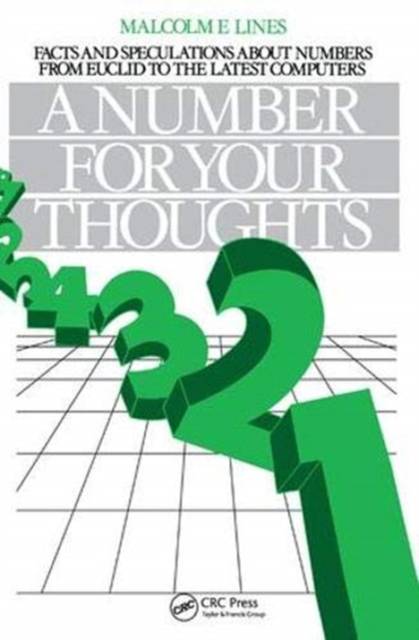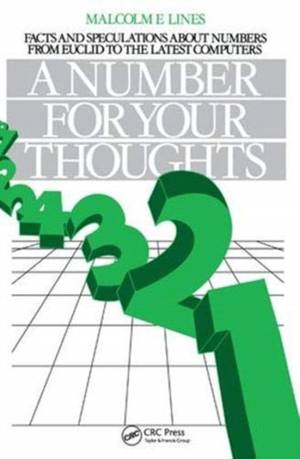
- Afhalen na 1 uur in een winkel met voorraad
- Gratis thuislevering in België vanaf € 30
- Ruim aanbod met 7 miljoen producten
- Afhalen na 1 uur in een winkel met voorraad
- Gratis thuislevering in België vanaf € 30
- Ruim aanbod met 7 miljoen producten
Zoeken
Number for Your Thoughts
Facts and Speculations About Numbers from Euclid to the Latest Computers
M E Lines
Hardcover | Engels
€ 175,95
+ 351 punten
Omschrijving
Why do we count the way we do? What is a prime number or a friendly, perfect, or weird one? How many are there and who has found the largest yet known? What is the Baffling Law of Benford and can you really believe it? Do most numbers you meet in every day life really begin with a 1, 2, or 3? What is so special about 6174? Can cubes, as well as squares, be magic? What secrets lie hidden in decimals? How do we count the infinite, and is one infinity really larger than another? These and many other fascinating questions about the familiar 1, 2, and 3 are collected in this adventure into the world of numbers. Both entertaining and informative, A Number for Your Thoughts: Facts and Speculations about Numbers from Euclid to the Latest Computers contains a collection of the most interesting facts and speculations about numbers from the time of Euclid to the most recent computer research. Requiring little or no prior knowledge of mathematics, the book takes the reader from the origins of counting to number problems that have baffled the world's greatest experts for centuries, and from the simplest notions of elementary number properties all the way to counting the infinite.
Alleen bij Standaard Boekhandel
+ 351 punten op je klantenkaart van Standaard Boekhandel
Beoordelingen
We publiceren alleen reviews die voldoen aan de voorwaarden voor reviews. Bekijk onze voorwaarden voor reviews.












